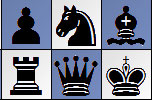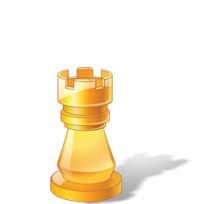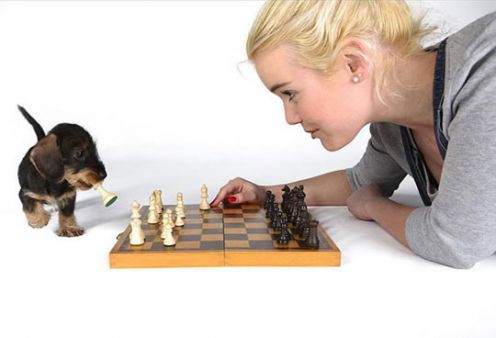Total Chess: chess piece’s maneuvers

Pawn Maneuvers
Pawns are the weakest pieces on the chess board. They are slow moving and unable to retreat because they cannot move backward. They can be easy to attack and difficult to defend. It is no wonder that many beginners completely ignore their pawns and concentrate on their more valuable pieces. Yet, pawns are very valuable and important. Pawns are the backbone of chess. They form the structure around which the other pieces move. You need to think about pawns throughout the entire game.
In the opening, pawns determine where you can develop your pieces and help you control the center. In the midgame, pawns control space and provide mobility and protection for your pieces. They can be used to help launch an attack or to break through the opponent’s defenses. In the endgame, pawns can advance to the back rank and promote to a queen. One pawn can make the difference between winning and losing the game. How? Every pawn could turn into a queen.
Knight Maneuvers
Knights are short-range pieces. They are good at maneuvering around in cramped positions because they can jump over pieces. Knights can get to every square on the board, though it may take them time to get there, even if the square is right next to them.
A knight is generally worth a little less than three pawns, and it is usually weaker than a bishop. The value of a knight decreases as more pieces are traded. A knight works better than a bishop in closed positions, but loses its advantage when there are fewer pieces to jump over. A knight also loses some of its mobility as it gets closer to the edges and corners of the board.
Two knights are much weaker than two bishops. A knight and a queen work well together because of their different types of movement. Knights are often worse than bishops when working with your own pawns or when working against the opponent’s pawns.
Bishop Maneuvers
Bishops are long-range pieces. They work better in open positions where there are fewer pieces to block their movement. They are at their best when placed on long, open diagonals. Each bishop can move to only half of the squares on the board, but it can move across the board very quickly.
A bishop is generally worth a little more than three pawns, and it is usually stronger than a knight. The value of a bishop increases as more pieces are traded. A bishop gains mobility and can maneuver better in open positions. A bishop is usually not as strong as a knight in closed positions.
Two bishops are much stronger than two knights. They work well together to attack and defend both the light squares and the dark squares. A bishop and a rook work better together than a knight and a rook. Bishops are often better than knights when working with your own pawns or when working against the opponent’s pawns.
Rook Maneuvers
Rooks are long-range pieces. They work best in open positions where there are fewer pieces to block their movement. Rooks often hang back early in the game, waiting for the board to clear before coming into play. When other pieces and pawns are traded and the board opens up, the rooks play a greater role.
A rook is usually worth much more than a bishop or a knight. A rook can get to every square on the board whereas a bishop cannot, and a rook can get across the board quickly whereas a knight cannot. The value of a rook increases as more pieces are traded, especially as more pawns are traded.
Two rooks are a little stronger than a queen. They work very well together. They can team up to double their power in ways that two bishops cannot. Rooks are much better than bishops or knights when working with your own pawns or when working against the opponent’s pawns.
Queen Maneuvers
The queen is your most powerful piece. It is a long-range piece that works best in open positions where there are few pieces to block its movement. You should be very careful when you move your queen. You do not want it to become exposed to attack and you do not want to get it trapped or blocked out of play.
The queen is worth a little less than two rooks. Two rooks can work together to double their power when attacking or defending, but a lone queen cannot. A lone queen is good at maneuvering around the board, but the queen works best with the help of other pieces. Other pieces can support the queen, allowing it to exert pressure on any area of the board.
The queen is often used to launch mating attacks. With support from other pieces, the queen can give checkmate at close range to the opponent’s king. It is usually best to use your queen to attack, not defend. You do not want to use your most powerful piece to defend your weaker pieces, especially not your pawns. The queen is often used to defend the king, though.
King Maneuvers
The king is your most valuable piece. The king can never be captured, but you lose the king and you lose the game when you get checkmated. You must be very careful when you maneuver your king. It must be kept safe from checkmate at all times.
One of the best ways to keep your king safe is to castle. This puts your king behind a protective wall of pawns, shielding it from attack. After you castle, try not to move the pawns in front of your king, unless you have to. Every time you move one of these pawns, you weaken your king’s safety a little bit. If you move too many of these pawns, they will no longer protect your king and it will become exposed to attack.
When should you move your king? Should it always stay on the back row and never move? Early in the game, the king should generally not move, but there are times when you need to move your king. King maneuvers can help you defend your king, and they can sometimes help you attack with your king.
***
From the book, “TOTAL CHESS: Learn, Teach and Play the Easy 1-2-3 Way,” by John Herron
TOTAL CHESS is your complete guide to chess. It covers everything: rules, strategies, tactics and checkmates.
Everything in chess comes in threes. Three simple strategies are presented for the opening, midgame, endgame, etc. Each lesson is brief and covers one concept in simple language that everyone can read and understand.
Ready to start winning games with chess maneuvers? Check out our store and articles:











Comments: